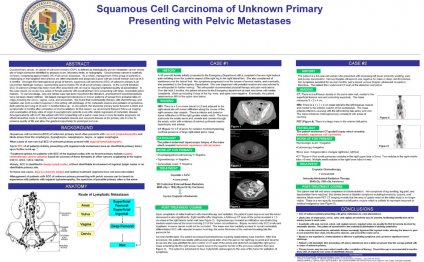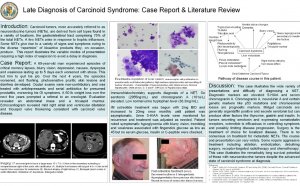
Medical case reports format

Abstract
A case report is an information of important medical findings which are missed or invisible in clinical tests. This includes a rare or uncommon medical problem, a formerly unreported or unrecognized disease, unusual unwanted effects to treatment or a reaction to treatment, and unique use of imaging modalities or diagnostic examinations to help diagnosis of an illness. Typically, an incident report should-be short and focussed, with its primary components becoming the abstract, introduction, case information, and discussion. This short article talks about the fundamental components of an instance report, using purpose of providing directions and ideas to beginner authors to improve their particular writing skills.
Introduction
For several doctors and other medical experts, composing an incident report represents initial work at getting articles posted in health journals and it is considered a helpful exercise in learning simple tips to write scientifically considering similarity of basic methodology. Case reports make an effort to express a clinical message. Despite several types of instance reports, they all seek to enhance the audience's understanding regarding the medical manifestations, the diagnostic approach (with a focus on imaging modalities for instance reports published in health imaging/radiology journals), or even the healing options of an illness. Therefore, an incident report worth reading should consist of both helpful practical messages and educational purpose.
Although instance reports tend to be regarded by some as the lowest (some even usually do not record the way it is reports anyway) within the hierarchy of proof in the health literary works, posting case reports permit anecdotal sharing of specific experiences, providing crucial sourced elements of information for the optimum proper care of customers. When you look at the hierarchy of evidence-based medicine, randomized managed tests are placed at the very top, superseded by organized reviews and meta-analyses, accompanied by potential experimental studies, after that observational scientific studies, case–control scientific studies, and situation series in the bottom. Most authors are now conscious of the influence element of journals that they publish their particular researches. Case reports are infrequently reported, and as a consequence, posting situation reports is likely to reduce the diary's influence aspect. It has led numerous editors to eliminate instance report areas from their journals.
On the other hand, it was described by other individuals that case reports which can be very carefully prepared and translated with appropriate caution play a valuable part both in the advancement of health knowledge plus the quest for education. Vandenbroucke indexed five functions of potential contribution to defend the publication of case reports:
- Recognition and description of a infection
- Recognition of uncommon manifestations of a known disease
- Elucidation of the components of an illness
- Detection of adverse or beneficial complications of medicines (also treatments)
- Medical training and audit
Two main functions are notable for instance reports posted in medical imaging and radiology journals: as types of new knowledge so when important opportinity for knowledge. The scenario report as a way to obtain brand-new understanding refers to visualization of an innovative new manifestation or choosing, or clearer demonstration of a known feature of an illness, making use of an innovative new imaging technology or an imaging strategy. Figure is an example showing 3D virtual endoscopy therefore the unique intraluminal views associated with the coronary lumen given by this brand-new visualization tool. The actual situation report as a way for teaching and understanding may be manifested as book of characteristic and instructive cases for academic functions. An example is that British Journal of Radiology (BJR) used to publish six to seven case reports in its monthly issue; however, it has alterd the format to publishing “Case of the Month” since May 2012. Academic price in place of extreme rarity is the main virtue of a case report worthy of publication.
 Multiplanar reformatted image showing the remaining coronary artery with coronary stent implanted (arrows) on ostium of left main stem (A). Virtual endoscopy views of the proximal section of left coronary artery (B), left anterior descending (C), and left circumflex (D). The inner wall of these coronary branches seems smooth on virtual endoscopy images with no indication of intraluminal irregularity. (Reprint with permission from research.)
Multiplanar reformatted image showing the remaining coronary artery with coronary stent implanted (arrows) on ostium of left main stem (A). Virtual endoscopy views of the proximal section of left coronary artery (B), left anterior descending (C), and left circumflex (D). The inner wall of these coronary branches seems smooth on virtual endoscopy images with no indication of intraluminal irregularity. (Reprint with permission from research.)
The structure of this situation report
Instance reports tend to be faster than most other types of articles. Case reports should include the next five parts: an abstract, an introduction with a literary works analysis, a description of case report, a conversation that includes an in depth description associated with the literature analysis, and a short summary associated with the instance and a conclusion. Tables, figures, graphs, and pictures make up the supplementary components and certainly will improve the instance report's circulation and clarity. Unlike original articles, case reports try not to follow the usual IMRAD (introduction, practices, outcomes, and conversation) format of manuscript company. As the format for situation states varies among various journals, it is important for writers to learn carefully and follow the target journal's guidelines to writers.
The name
The title is the first part of an incident report which is look over by visitors. Therefore, it ought to be succinct, informative, and highly relevant to the subject. The perfect name should entice the reader's interest and state the focus on a particular problem, without having to be too cumbersome or artificial. Redundant words such as “case reports” or “review regarding the literature” should be omitted, and ostentatious terms like “unique case” or “first report of” should-be avoided. Table lists the titles of instance reports that were posted in BJR (British Journal of Radiology) and JMIRO (Journal of health Imaging and Radiation Oncology) between 2012 and 2013.
Table 1. A summary of case reports published in BJR and JMIRO between 2012 and 2013See also
Share this Post
Related posts
How to write a case reports medical?
Case reports represent the oldest and most familiar form of medical communication. Far from a second-class publication…
Read MoreMedical Case Manager
Providers for Catastrophic Injuries and Elaborate Pain Circumstances Paradigm Outcomes stands apart from old-fashioned situation…
Read More
















